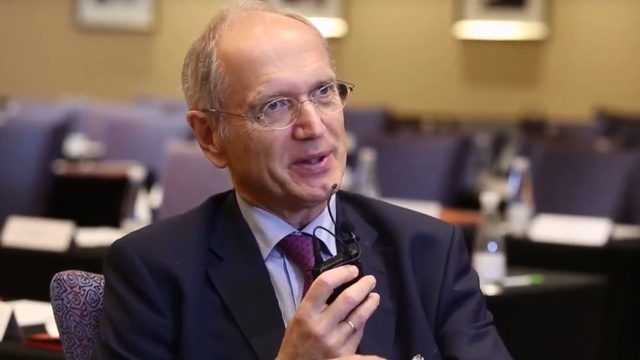
Closer to a cure?
When he published the Essay on the Shaking Palsy in 1817, James Parkinson thought – optimistically, as it turned out -- that it would not be long before we had, if not a cure, then at least a way of stopping disease progression.
With improved understanding of the pathology and its spread, we must be getting closer to the goal – perhaps not of a cure in the strict sense -- but of delaying onset of the disease by several years. That is the view of Werner Poewe, of the Innsbruck Medical University, Austria.
As well as the new insights into pathology, discoveries in genetics have revealed relevant pathways and accompanying targets. And we have advanced our understanding of what is happening in people on the road to clinical Parkinson’s who harbour the pathology and neurobiology but have not yet developed the disease as we now define it. Opportunities for neuroprotection should open up.
Why new criteria?
The widely-used UK Parkinson’s Disease Society Brain Bank criteria were from the late 1990s. Some of the definitions conflicted with our current understanding, Professor Poewe explained. For example, there was no mention of non-motor aspects of the disease. And there was an issue about dementia featuring as an exclusion criterion even though PD dementia had moved into the clinical foreground.
There was also the question of diagnostic tests: twenty years on, were we at a stage in which any could be incorporated into the clinical criteria?
Some people also felt we needed to distinguish between different levels of certainty in our clinical diagnosis, acknowledging that even in specialist centres the diagnosis made on first visit may need to be reconsidered a year or so later. Does the patient in fact have Multiple System Atrophy?, for example.
All of which led the Movement Disorder Society to convene a panel of twenty or so clinicians, led by Daniela Berg and Ron Postuma, representing all the world’s continents, plus experts in neuropathology, genetics and electrophysiology.
Acknowledging uncertainty helps both clinical practice and research
Consensus and controversy
After three or more years of meetings, the panel achieved a degree of consensus which Werner Poewe describes as “remarkable” -- though this was not without some controversies along the way, and since publication.
The criteria relating to the movement and non-motor aspects of the disease have not proved problematic.1 The biggest controversy has been in relation to the concept of dementia with Lewy bodies versus PD dementia. Does early dementia exclude PD? Are the two conditions different diseases?
In hindsight, the clinical groups involved in seeing these patients should have been better represented on the panel drawing up the new PD criteria, Professor Halliday acknowledges. She is involved both with PD dementia researchers and those concerned with dementia with Lewy bodies and believes that in the long run the two groups will come closer together. New diagnostic criteria for Lewy body dementia are expected.
Another clear area of current interest is prodromal PD. According to Professor Halliday, the Movement Disorder Society Task Force wanted to make their criteria compatible with future developments in this field. There is a companion paper on prodromal criteria, which are undoubtedly less clear, and the recommendations are intended principally for research.2 They are likely to see considerable modification with time.
In the future, Professor Poewe believes, we will probably see the incorporation into guidelines of biomarkers in tissue, CSF and blood. And aspects of imaging may also become sufficiently well validated to allow inclusion in diagnostic criteria.
Aiding both practice and research
The new MDS criteria were developed with the intention of refining diagnostic accuracy at the level of clinical practice. But they acknowledge the possibility of uncertainty by introducing the categories “clinically established” and “clinically probable” for those patients in whom we have to keep an open mind.
Shen-Yang Lim, of the University of Malaya in Kuala Lumpur, Malaysia, believes that the new criteria were a timely – and indeed necessary – development.
“As clinicians, we have the role of providing personalised and accurate information. Giving patients the diagnosis of PD has significant implications for them. These new criteria help,” he says.
“On the research side, we contribute to an East Asian consortium looking at genetic factors. Greater accuracy in diagnosing PD gives us a better chance of finding genetic signals underlying the disease. So on both fronts the new criteria are a very positive advance.”

